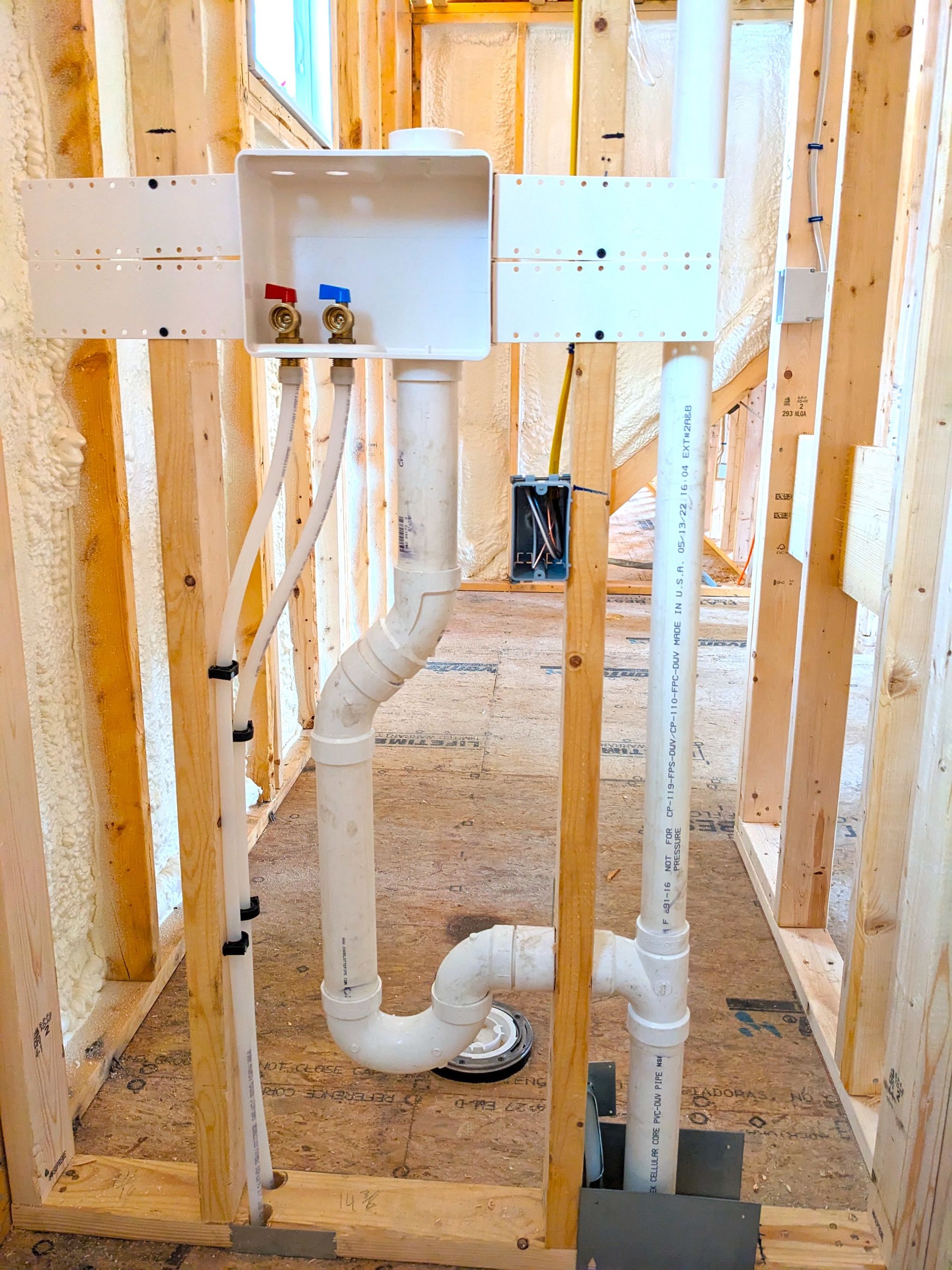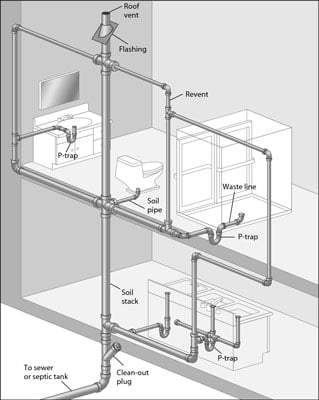The Advantages of Adequate Ventilation in Your Plumbing System
The Advantages of Adequate Ventilation in Your Plumbing System
Blog Article
Just about everyone will have their own individual perception about What Is a Plumbing Vent and Why Is It Important.

Correct ventilation in pipes systems is often neglected, yet it is crucial for preserving the capability and safety of your home's plumbing. Ventilation aids regulate atmospheric pressure, stop the buildup of dangerous gases, and ensure the efficient elimination of waste. In this guide, we will certainly explore the value of appropriate plumbing ventilation, just how it works, and the advantages it brings to your pipes system.
Recognizing Ventilation in Plumbing
Air flow in pipes describes the network of pipes that allow air to flow with the drainage system. These vents serve numerous purposes, including controling atmospheric pressure within the pipelines, avoiding sewer gases from going into the home, and helping in the smooth flow of wastewater.
Exactly How Ventilation Works in Plumbing Solutions
Air Pressure Guideline
Correct air flow keeps balanced atmospheric pressure within the pipes system. When water streams through pipelines, it displaces air. Without appropriate air flow, this displacement can develop unfavorable pressure, leading to reduce drains pipes or siphoning of water from traps, which can cause undesirable odors to leak into the home.
Avoiding Sewage System Gas Buildup
Among the most essential features of plumbing vents is to avoid sewage system gases, such as methane and hydrogen sulfide, from accumulating within the home. These gases can present significant wellness risks and are very flammable. Vent pipelines permit these gases to leave securely outdoors.
Helping in Waste Removal
Air flow helps in the reliable elimination of wastewater by avoiding airlocks in the water drainage system. When air can flow freely via the vents, it permits water and waste to move smoothly with the pipes, minimizing the danger of blockages and backups.
Sorts Of Pipes Vents
Key Stack Vent
The main pile air vent, additionally called the air vent stack, is the key vent in a pipes system. It extends from the main drainpipe line up via the roof, permitting gases to leave and fresh air to get in the system.
Branch Vent
Branch vents link to the major stack vent and offer individual components, such as sinks, commodes, and showers. These vents ensure that each component has adequate air flow to function effectively.
Air Admission Valve (AAV).
An Air Admittance Valve (AAV) is a one-way valve that permits air to go into the plumbing system without the demand for a typical air vent pipe extending via the roofing. AAVs are typically utilized in renovations or locations where mounting a basic air vent is impractical.
Signs of Poor Air Flow in Pipes.
Slow Draining Fixtures.
If your sinks, bathtubs, or bathrooms are draining slowly, maybe an indicator of bad ventilation. Inadequate air circulation can produce a vacuum result, making it tough for water to drain correctly.
Gurgling Sounds.
Gurgling audios coming from drains are usually a result of air being sucked through water catches due to negative pressure in the pipelines. This is a clear indication of not enough air flow.
Undesirable Odors.
Sewer smells inside your home are a red flag that your pipes system is not properly aerated. This can mean that sewer gases are not being adequately vented outside, causing potentially unsafe conditions.
Typical Ventilation Blunders.
Insufficient Vent Sizing.
Using small air vent pipelines can bring about poor air flow and stress discrepancies in the system. It's vital to make use of vents that satisfy the particular needs of your pipes system.
Improper Vent Positioning.
Putting vents as well far from the fixtures they serve can lower their effectiveness. Appropriate placement guarantees that air can flow easily and effectively via the system.
Ignoring Code Demands.
Building regulations offer specific standards for plumbing air flow. Ignoring these codes can cause a system that fails to operate appropriately and may lead to pricey repair services or carcinogen.
Benefits of Correct Ventilation.
Boosted System Effectiveness.
Appropriately ventilated pipes systems run extra efficiently, with fewer obstructions, faster draining pipes, and less pressure on the pipes. This performance expands the life-span of the plumbing system.
Improved Air Quality.
By stopping sewer gases from entering your home, correct air flow adds to better indoor air high quality, making your living environment healthier and a lot more comfy.
Stopping Water Damage.
Appropriate ventilation aids stop water from being siphoned out of traps, which can bring about drain gases going into the home and causing water damages over time.
Actions to Ensure Appropriate Air Flow.
Consulting Plumbing Codes.
Always get in touch with local pipes codes when creating or modifying your plumbing system. These codes give the necessary guidelines for correct airing vent and ensure your system meets security criteria.
Normal Examination and Upkeep.
Normal inspections can help determine prospective ventilation issues before they come to be significant troubles. Maintenance jobs, such as cleansing air vent pipelines and checking for blockages, are essential for maintaining the system in good working order.
Specialist Setup.
For new installations or significant adjustments, it's a good idea to hire an expert plumber. They have the proficiency to guarantee the air flow system is correctly developed and set up according to code.
Verdict.
Correct ventilation is a critical part of any type of pipes system, making sure that it works efficiently and securely. By comprehending the significance of air flow, identifying the indicators of inadequate ventilation, and taking actions to keep your system, you can protect against expensive concerns and secure your home's air quality.
What is a Plumbing Vent and it's used for?All plumbing systems in residential and commercials construction have a plumbing vent. It doesn’t just vent unwanted odors from the drainage system to the outside; it actually serves an important purpose by supplying air to the system.
The plumbing drainage system is actually called a drainage, waste and vent (DWV) system. When water flows down the piping, an air supply (vent) is needed to allow the water to flow. Think of the vertical pipe as a drinking straw. If you plug the top end of a straw, liquid won’t drain from it.
The DWV system in your building consists of a series of pipes connected to each fixture; they extend above each fixture, and the system terminates at an open pipe that extends through the roof. This piping allows air into the system and prevents unbalanced pressures in the piping.
?The vent also prevents the system from drawing water out of a trap at the fixture with the characteristic “glug-glug-glug” as the drain gasps for air. Plumbing traps should drain smoothly and never “glug” or gasp for air.
If you have a drain that empties slowly or gurgles as it drains, this may indicate a venting problem. If you flush a toilet and the sink gurgles, there’s definitely a vent problem. It is good idea to have a Plumber check this.
https://www.ameliashomeinspection.com/blog/what-is-a-plumbing-vent-and-its-used-for

I stumbled upon that content about Why Plumbing Air Vents Are Important while surfing the internet. Do you know about another individual who is excited by the topic? Why not promote it. We recognize the value of reading our article about Essential Plumbing Vent Pipes: Understanding Their Role.
Booking Page Report this page